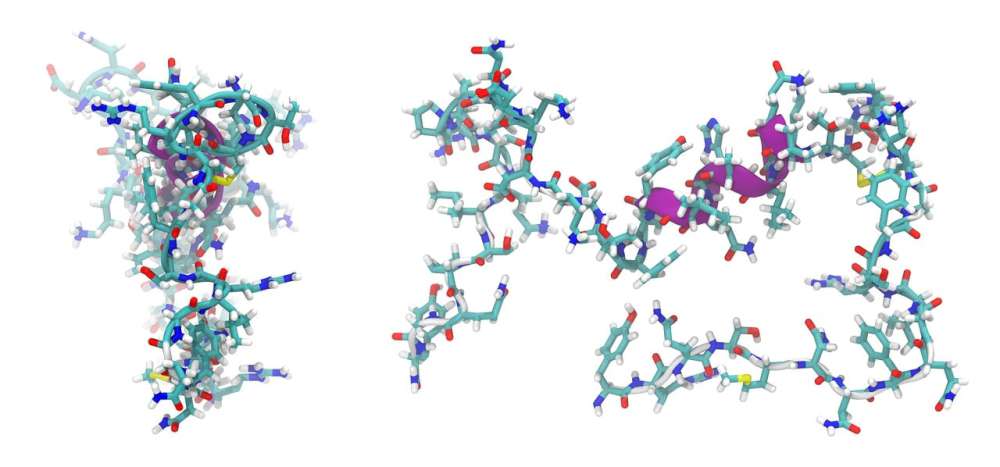CJC-1295 is a synthetic compound analog of growth hormone-releasing hormone (GHRH) that has garnered attention in various scientific research domains. By potentially extending the half-life of endogenous GHRH, CJC-1295 is believed to offer unique opportunities to investigate growth hormone (GH) dynamics and their broader implications.
This article explores the structural characteristics of CJC-1295, its hypothesized mechanisms of action, and its prospective applications in fields such as endocrinology, metabolism, regenerative science, and cellular aging research.
Introduction
The regulation of growth hormone (GH) is pivotal for numerous physiological processes, including growth, metabolism, and tissue repair. Synthetic peptides like CJC-1295, designed to modulate GH secretion, have become valuable tools in research.
CJC-1295 is a modified analog of growth hormone-releasing hormone (GHRH), engineered to potentially enhance its stability and prolong its activity within the organism. This extended activity may provide researchers with a sustained model to study GH-related pathways and their impacts on various biological functions.
Structural Characteristics of CJC-1295
CJC-1295 comprises 30 amino acids and includes specific modifications that may support its stability and binding affinity. These structural alterations are believed to extend its half-life compared to endogenous GHRH, potentially offering prolonged biological activity.
The incorporation of a Drug Affinity Complex (DAC) in CJC-1295 is thought to further extend its half-life to about 8 days, compared to the 30-minute half-life of regular GHRH. This modification seems to allow for sustained GH release, making it a potentially relevant compound in various research applications.
Hypothesized Mechanisms of Action
CJC-1295 is thought to bind to GHRH receptors in the anterior pituitary gland, encouraging the release of GH. The prolonged half-life of CJC-1295, attributed to its structural modifications, may result in sustained GH secretion.
This sustained release could lead to continuous stimulation of insulin-like growth factor 1 (IGF-1) production in the liver, which is known to mediate many of GH’s influences. Research indicates that the extended activity of CJC-1295 might provide a more consistent and prolonged elevation of GH and IGF-1 levels, offering a unique model to study their physiological roles.
Research
Endocrinology and Metabolic Research
The potential of CJC-1295 to potentially sustain GH secretion makes it a valuable tool for studying metabolic processes. Research indicates that prolonged GH elevation may influence lipid and carbohydrate metabolism, providing insights into conditions like obesity and metabolic syndrome.
By utilizing CJC-1295 in experimental settings, researchers can explore the regulatory mechanisms of GH in metabolic homeostasis and energy balance.
Muscle Physiology and Regenerative Science
GH plays a paramount role in muscle growth and regeneration. Investigations purport that CJC-1295 may enhance muscle protein synthesis and satellite cell activity, which are deemed essential for muscle repair and hypertrophy.
This potential makes CJC-1295 a candidate for studying muscle-wasting conditions and the underlying mechanisms of muscle regeneration, offering avenues for developing research strategies in regenerative science.
Cellular Aging and Longevity Studies
Aging is linked to a decline in GH secretion, leading to various age-related physiological changes. It has been hypothesized that CJC-1295 could serve as a model to study the impacts of sustained GH levels on cellular aging processes.
By maintaining elevated GH and IGF-1 levels, researchers can investigate the impacts on tissue maintenance, cognitive function, and overall organismal vitality, contributing to our understanding of the aging process of cells and possible interventions.
Immune Function and Inflammatory Response Research
GH is considered to modulate immune responses. Studies suggest that CJC-1295 may influence immune cell proliferation and cytokine production.
This potential positions CJC-1295 as a subject of interest in immunological research, where it could be studied to explore the interactions between the endocrine and immune systems and to develop strategies for modulating immune responses in various conditions.
Neuroprotective Research
GH and IGF-1 have been implicated in neuroprotection and cognitive function. Research indicates that CJC-1295 might cross the blood-brain barrier, potentially influencing neuronal growth and survival.
This property might be leveraged to study neurodegenerative diseases and cognitive decline, providing insights into the development of neuroprotective approaches.
Bone Density and Osteoporosis Research
GH is a critical regulator of bone metabolism. Investigations purport that CJC-1295 may support osteoblast activity and bone mineralization, making it a valuable tool for studying bone density and osteoporosis.
By utilizing CJC-1295 in research, scientists can explore the pathways involved in bone remodeling and develop potential interventions for bone-related disorders.
Conclusion
Research indicates that CJC-1295 presents a promising avenue for scientific exploration across multiple domains. Its potential to induce prolonged GH release within organisms suggests it could be a powerful tool for investigating GH’s broader impacts on physiological and biochemical processes.
Continued research into CJC-1295 may uncover new insights into growth hormone regulation and its applications in scientific research.
Note: CJC-1295 is currently approved for research purposes only. All information provided here is intended for educational and informational purposes. Visit Biotech Peptides for the highest-quality research compounds available for sale online.
References
- Schally, A. V., Cai, R., Zhang, X, Sha, W., & Wangpaichitr, M. (2024). The development of growth hormone-releasing hormone analogs: From bench to bedside. Reviews in Endocrine and Metabolic Disorders, 25(1), 123–138. Biotech Peptides.
- Teichman, S. L., Neale, A., Lawrence, B., Gagnon, C., Castaigne, J. P., & Frohman, L. A. (2006). Prolonged stimulation of growth hormone (GH) and insulin-like growth factor I secretion by CJC-1295, a long-acting GH-releasing hormone analog. The Journal of Clinical Endocrinology & Metabolism, 91(3), 799–805.
- Schally, A. V., Varga, J. L., Engel, J. B., & Halmos, G. (2019). Actions and potential therapeutic applications of growth hormone-releasing hormone agonists. Endocrinology, 160(7), 1600–1612.
- Zarandi, M., Cai, R., Kovacs, M., Popovics, P., Szalontay, L., Cui, T., Sha, W., Jaszberenyi, M., Varga, J., Zhang, X., Block, N. L., Rick, F. G., Halmos, G., & Schally, A. V. (2025). Growth hormone-releasing hormone signaling and manifestations within the cardiovascular system. Reviews in Endocrine and Metabolic Disorders, 26(2), 215–230.
- Schally, A. V., Comaru-Schally, A. M., & Varga, J. L. (1999). Antagonistic analogs of growth hormone-releasing hormone: New potential antitumor agents. Critical Reviews in Oncology/Hematology, 31(2), 115–138.













